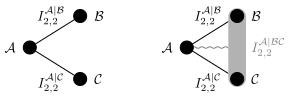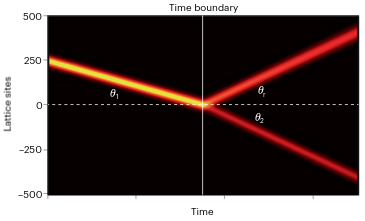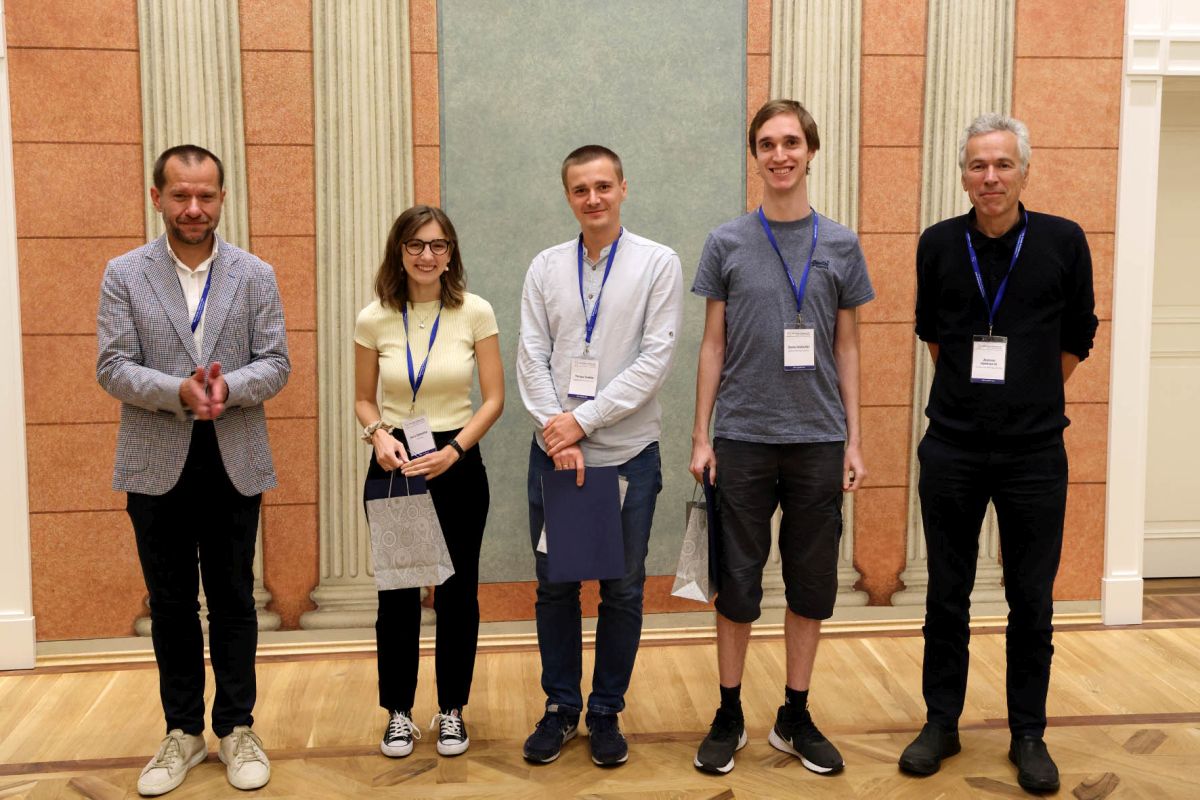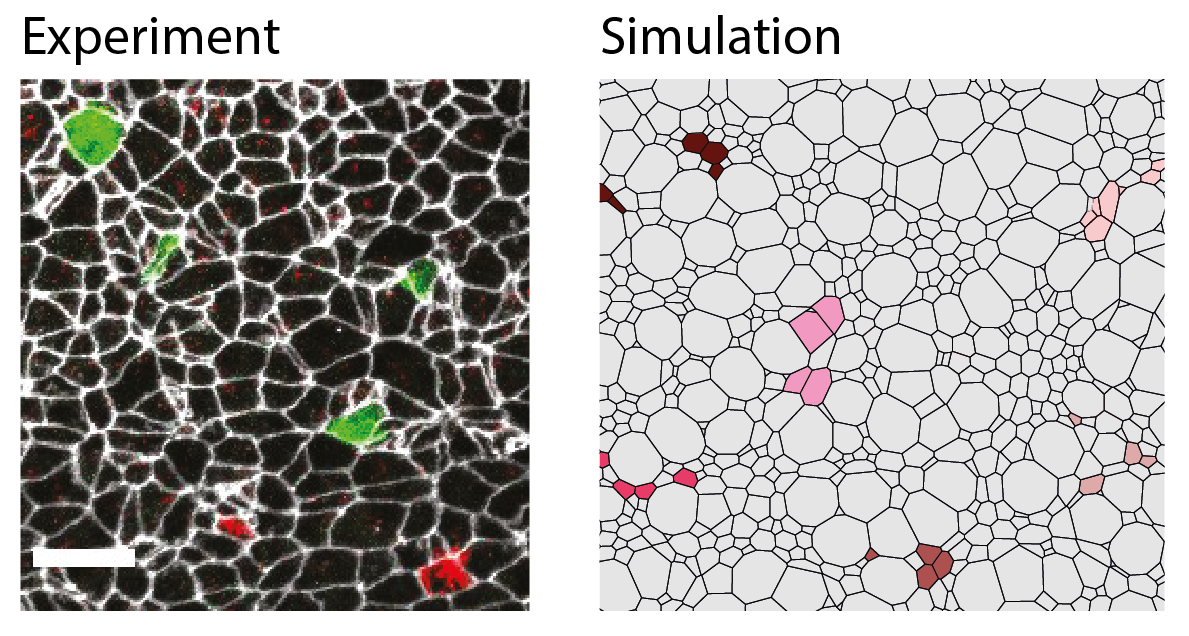Moisés Bermejo Morán, Alejandro Pozas-Kerstjens, Felix Huber; publication in Physical Review Letters

Which nonlocal correlations can be obtained, when a party has access to more than one subsystem? While traditionally nonlocality deals with spacelike separated parties, this question becomes important with quantum technologies that connect devices by means of small shared systems. Here we study Bell inequalities where measurements of different parties can have overlap. This allows to accommodate problems in quantum information such as the existence of quantum error correction codes in the framework of non-locality.
Phys. Rev. Lett. 131, 080201 (2023)
Commentary by Krzysztof Sacha in News and Views, Nature Photonics

Reflection and refraction at a time boundary
by Peter Hannaford & Krzysztof Sacha
Ultracold atoms provide a platform for realizing the temporal analogue of Snell’s law.
In 1621, Dutch astronomer Willebrord Snell mathematically described how a light wave behaves when it crosses a boundary between media with different refractive indices. Since then, Snell’s law of refraction has become a cornerstone of optics. Interestingly, the space–time duality inherent in Maxwell’s equations suggests there should also be temporal analogues of the laws of reflection and refraction for a light wave crossing a time boundary.
Read the commentary in Nature Photonics.
Ranking Top 2%
Eleven scientists from Institute of Theoretical Physics of the Jagiellonian University have been included in the prestigious ranking of the most influential scientists in the world.
The list of Top 2% is compiled by Stanford University in cooperation with Elsevier and SciTech Strategies and includes the names of scientists whose publications are most frequently cited by other authors. Among other things, the overall scientific achievements of individual scholars are evaluated according to the bibliometric index, which takes into account criteria such as: Hirsch index, number of citations (including self-citations), Impact Factor, and position on the list of authors.
The first list, which evaluates the overall scientific output, includes 11 scientists from ITP:
- prof. Andrzej Białas,
- prof. Piotr Bizoń,
- dr hab. Bogdan Damski,
- prof. Jacek Dziarmaga,
- prof. Wojciech Florkowski,
- prof. Romuald Janik,
- prof. Krzysztof Sacha,
- prof. Józef Spałek,
- prof. Andrzej Oleś,
- prof. Jakub Zakrzewski,
- prof. Karol Życzkowski.
Second list of the most cited scientists includes 7 names from ITP:
- dr hab. Bogdan Damski,
- prof. Jacek Dziarmaga,
- prof. Wojciech Florkowski,
- prof. Krzysztof Sacha,
- prof. Józef Spałek,
- prof. Jakub Zakrzewski,
- prof. Karol Życzkowski.
Tomasz Szołdra with distinguished poster award during Time Crystals conference

Tomasz Szołdra, PhD student from Atomic Optics Department of ITP, has been distinguished for his poster during Time Crystals conference that took place in Kraków, September 6 – 8, 2023.
Doctoral thesis of Krzysztof Giergiel distinguished by the Polish Physical Society
The Polish Physical Society awarded Krzysztof Giergiel the Zygmunt Florenty Wróblewski Scientific Award for his doctoral dissertation titled 'Time Crystal Phenomena' written under supervision of Prof. Krzysztof Sacha from Atomic Optics Department.
More information can be found here.
Article from Department of Complex Systems highlighted in The Modern Language Journal

The Modern Language Journal has selected three papers published in 2022 that are of the highest quality and with the broadest potential impact on the field of second language learning and teaching. One of them is an article co-authored by dr Jeremi Ochab: Paradowski, M. B., Cierpich–Kozieł, A., Chen, C. & Ochab, J. K. How Output Outweighs Input and Interlocutors Matter for Study-Abroad SLA: Computational Social Network Analysis of Learner Interactions. The paper reports, among others, an analysis of an entire social network of foreign language course participants, where associations between graph properties of the student interactions and their performance in foreign language acquisition have been found. Social network analysis (SNA) is one of the main fields of application as well as drivers of the development of the modern theory of complex networks. The research described in the paper is a part of Dr. Ochab's previous doctoral grant from the National Science Centre of Poland entitled Statistical foundations in detection of modular structures in complex networks (nr 2013/09/N/ST6/01419).
Ludwik Dąbrowski, Andrzej Sitarz, Paweł Zalecki; publication in Advances in Mathematics

We define bilinear functionals of vector fields and differential forms, the densities of which yield the metric and Einstein tensors on even-dimensional Riemannian manifolds. We generalise these concepts in non-commutative geometry and, in particular, we prove that for the conformally rescaled geometry of the noncommutative two-torus the Einstein functional vanishes.
Advances in Mathematics 427, 109128 (2023)
Marta Lotka with the best poster
Marta Lotka won the poster competition during 48th conference: Middle European Cooperation in Statistical Physics (MECO48), May 22–26, 2023, in Stará Lesná (Slovakia)
"EEG signal segmentation for assessing the time-course of brain response to stimuli"
NCN Grants
- dr Piotr Czarnik "Mitigacja błędów komputerów kwantowych" – SONATA 18
- prof. dr hab. Wojciech Florkowski "Dynamika spinu w układach relatywistycznych" – OPUS 24
https://www.ncn.gov.pl/konkursy/wyniki/2023-05-18-opus24-sonata18
Laura Bocanegra-Moreno, Amrita Singh, Edouard Hannezo, Marcin Zagórski, Anna Kicheva; publication in Nature Physics

During the development of the spinal cord, shortly after the closure of neural tube, cells divide rapidly, changing their location many times. A closer look into a single cell history reveals that its daughter cells become dispersed in the tissue after several divisions. Using a two-dimensional simulation of the tissue with cell division events, elasticity and fluctuations in the cell internal tension, we showed that in order to explain the observed level of fragmentation of daughter cell population an additional factor was missing. This factor was the movement of cell nucleus during the cell cycle that resulted in changes in the cell apical surface. This movement caused some cells to expand leading to local cell rearrangements. As a result of these rearrangements, the tissue became more fluid-like. After several hours the nucleus movements slowed down, the population of daughter cells stayed clustered, and the tissue resembled a solid. The research was conducted on mouse embryos, but the identified mechanisms influencing the spread of cells in the growing tissue could be applied in tissue engineering and to design neuroregenerative therapies.
Maciej Majka, Richard Ho, Marcin Zagórski; publication in Physical Review Letters

In developing organisms cells through gene-gene interactions interpret gradients of signaling molecules to establish pattern of gene expression domains. These domains will later on give raise to different body parts and organs. In this letter, we study the dynamics of two domains producing signaling molecules and auto-activated by these molecules by means of a reaction-diffusion equation with domain interaction term. Thanks to identifying a new law describing the number of particles reaching the front of the activated domain, we found analytical form of the velocity of these domains and the conditions ensuring the creation of a stable gene expression pattern. Interestingly the perfect stability, with both domains remaining at rest was very rare, whereas the situation with two domains shifting in a coordinated fashion was far more frequent. If the strength of gene-gene interactions was lower than a certain threshold value, the pattern of domains was lost, bearing characteristics of phase transition. The obtained results were related to the formation of domains in a fruit fly with potential implications for patterning in the developing spinal cord.
Phys. Rev. Lett. 130, 098402 (2023)
Bartjan van Tent, Paola C. M. Delgado, and Ruth Durrer; publication in Physical Review Letters

Quantum gravity currently represents one of the biggest challenges to both theoretical and observational cosmology. An important attempt in the direction of a quantum gravity theory is loop quantum gravity, where the cosmological singularity can be resolved in a bounce. In this letter we show that attractive bouncing models from and inspired by loop quantum cosmology are excluded with high significances by the Planck data. These models are particularly interesting due to their capability of mitigating the large-scale anomalies in the Cosmic Microwave Background (CMB). We focus on the CMB bispectrum of such models, which decays exponentially inside the horizon. Even though the scenario is designed in order to agree with CMB constraints (including constraints on non-Gaussianities), Planck data rules out such models. This conclusion shows the sensitivity of the Planck data to scales beyond the pivot scale.
Phys. Rev. Lett. 130, 191002 (2023)
Article from Atomic Optics Department distinguished by Scientific American
Scientific American picked 6 articles, which "blew our minds" in 2022. It is our pleasure to announce that one paper is coauthored by Prof. Krzysztof Sacha: All-optical dissipative discrete time crystals. Link to the note in Scientific American 6 Times Quantum Physics Blew Our Minds in 2022.

